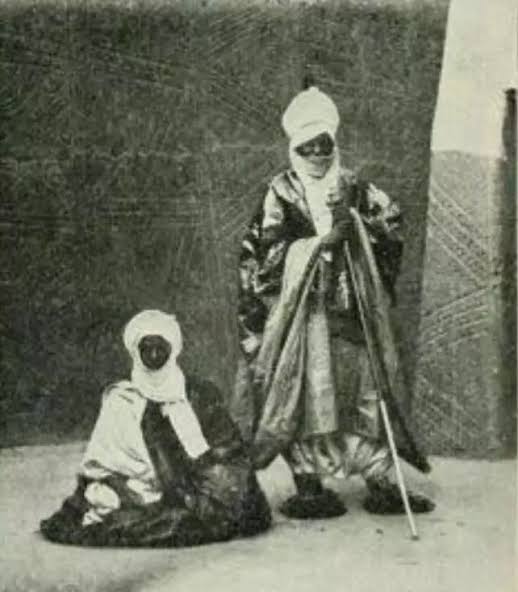In this article, we are briefly going to look at how Islam found its way into Hausaland from other regions of Africa. These regions were exposed to Islam as far back as the 7th century during the first Hijrah when Prophet Muhammad (S.A.W) advised some of his disciples to seek refuge across the Red Sea in Axum (a city in Ethiopia) from the polytheistic inhabitants of Makkah that were prosecuting the believers at the time.
The spread of Islam in Western and Central Sudan is mainly attributed to some migrating groups such as the Takrur, Fulani and Wangarawa.
It was reported that Islam was introduced in Hausaland before the 15th century by the Wangarawa traders that emigrated from Mali after the political upheavals during the reign of Mansa Musa Sulayman. The Wangarawa played a major role in the spread of Islam into the Hausa states of Kano, Katsina, Zazzau, Gobir, Daura, Rano and Biram ta Gabas. The Wangarawa community was said to be a fairly closed literary community in the middle of large illiterate society and whenever they settled, they set up trading posts and opened schools for their children.

According to other sources, Islam was introduced in Hausaland by the Wangarawa in the 14th century during the reign of the eleventh ruler of Kano, Sarki Yaji (1349-85). Initially, Islam was adopted by the ruling classes before the common people adopted it too. In Kano, during the reign of Muhammad Rumfa (1463-99) Islam was said to be the state religion. He introduced Islamic reforms into Kano political administration and substituted pagan practices with Islamic institutions.

Before the end of the 15th century, many celebrated scholars from the Maghrib and Western Sudan had visited Kano and taught in its schools. Scholars such as Umar bin Aqit, the great grandfather of Ahmad Baba al-Timbukti visited Kano in 1487. Muhammad bin Abd al-Karim al-Maghili, the celebrated North African scholar also visited. Muhammad Rumfa requested for a compilation of Islamic policies from al-Maghili to serve as a guide for him to rule his subjects according to the principles of Islam. Thus, al-Maghili wrote a treatise titled Jumla Mukhtasara to Sarki Rumfa.
Such reforms were introduced in Zazzau by Muhammad Barau and in Katsina by Muhammad Korau even though Zazzau remained a pagan state longer than Kano and Katsina. By the 16th century, Kano and Katsina were great centers of learning attracting scholars from Maghrib (now Morocco), the Middle East and Western Sudan. Scholars such as Abd al-Rahman Suqain; the Moroccan who was the student of Ibn al-Ghazi came from Egypt and started teaching in Kano. Another scholar was al-Tazakhti who settled in Katsina and was given the office of Al-Qadi by the ruler of Katsina.
By the 17th century, a great number of Hausa land intellectuals had started producing their own works. The scholar Muhammad al-Kashnawi (Dan Marina) had flourished in Katsina during the first half of the 17th century and he was described as a poet, a commentator and a well known scholar. Another outstanding scholar was Muhammad Dan Mansani who is reported to have studied under Dan Marina.
And in the 18th century, the scholar Muhammad bin Muhammad al-Fulani al-Kashnawi rose to make great contributions to Islamic literacy in Hausaland and beyond. He was born in Katsina but died in Egypt on his way back from Makkah. It was reported by the Egyptian historian Abd-al-Rahman al-Jabarti that Muhammad al-Fulani had entered the circle of scientists and astrologers cultivated by his father Hasan al-Jabarti.

Al-Jabarti received instructions in many subjects from Muhammad al-Fulani before he died while still a guest of al-Jabarti’s household. He was very versed in sciences and other branches of learning. Some of his works were listed in the catalogue of Khadival Library in Cairo and a number of his works are now preserved in Dar al-Kutub in Egypt, and in the Archives of Egypt, Morocco and Nigeria, as well as the University of London.
A famous saying of his is “Do not give up, for that is ignorance and not according to the rules of this art…Like the lover, you cannot hope to achieve success without infinite perseverance.”

One of the leading Ulama’ of the 18th century was Jibril bin Umar, the teacher of both Uthman and Abdullahi bin Foduye. He was not simply an ordinary scholar who followed the traditional pattern of learning and teaching, but he also attempted several times to initiate reforms in Hausa land and was said to have inspired the jihad movement of Shaykh Uthman bin Foduye. He performed pilgrimage twice and he spent twenty years studying in Egypt and Hijaz. He died in Agedes while proceeding to Makkah for the third time.
By the 18th century, great centers of learning had been established in Zaria, Kano, Katsina, Yandoto, Degel and other parts of Hausaland. Scholars moved from one centre to another to acquire more knowledge and to communicate what they had learnt to their pupils. And by the 19th century, Hausaland became ripe for the revolution that was initiated by the Shehu and his disciples.
Sources:
- The Intellectual Origin of Sokoto Jihad by Ahmad Muhammad Khani
- The Fulani Empire by H. A. S. Johnston
By Fatima Maishanu.

I had always wondered about the history of Islam (or whether Islam existed at all) in Hausaland before the onset of Danfodio’s Jihad. Now, I’ve gotten a bit of a viewpoint. Truly enlightening.
LikeLike
Thank you
LikeLike